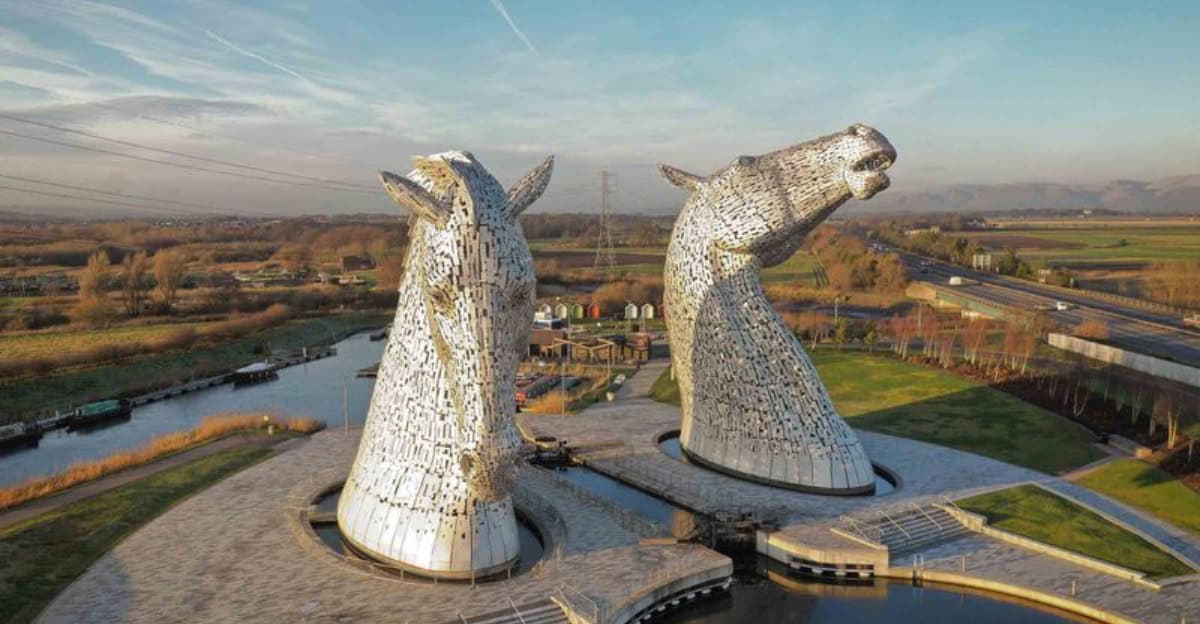Discover a world where art and nature blend harmoniously with these 10 awe-inspiring sculptures.
These creations not only captivate the eye but also enhance their natural surroundings, creating a dialogue between human creativity and the earth’s beauty.
1. Spiral Jetty, Utah, USA
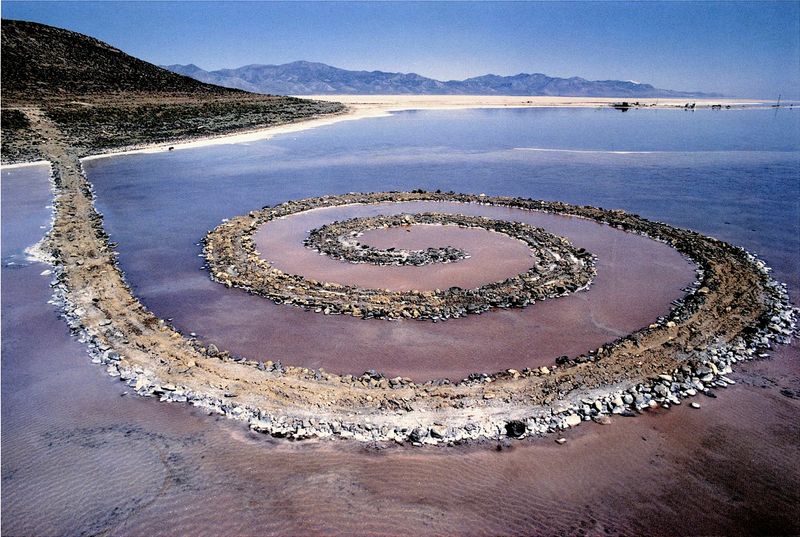
Spiral Jetty, crafted by Robert Smithson in 1970, is a mesmerizing earthwork sculpture located on the northeastern shore of Utah’s Great Salt Lake.
This iconic piece is a 1,500-foot-long coil of black basalt rocks, stretching into the pinkish waters of the lake.
Smithson’s masterpiece is a prime example of land art, an art movement that emerged in the 1960s. The sculpture’s appearance changes with the lake’s water levels, creating a dynamic interaction between art and nature.
Visitors to Spiral Jetty can enjoy walking along its path, experiencing the blend of artistic vision and the natural landscape.
2. The Singing Ringing Tree, Lancashire, UK
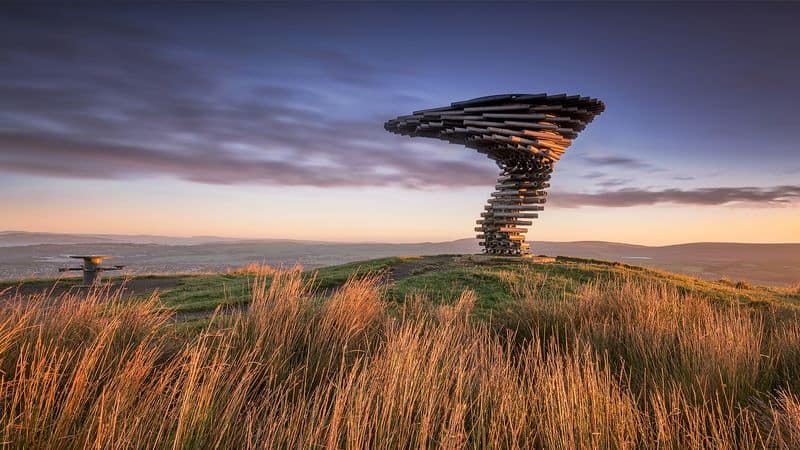
The Singing Ringing Tree, perched on a hilltop in Lancashire, UK, is a unique musical sculpture designed by architects Mike Tonkin and Anna Liu.
Built in 2006, it is fashioned from galvanized steel pipes, which produce a resonant hum as the wind blows through them.
This award-winning installation merges art and sound, offering visitors an auditory experience that varies with the weather. The sculpture stands 3 meters tall and resembles a twisted tree.
Its harmonious tones and striking silhouette have made it a favorite spot for both locals and tourists seeking a moment of reflection.
3. Fallingwater, Pennsylvania, USA
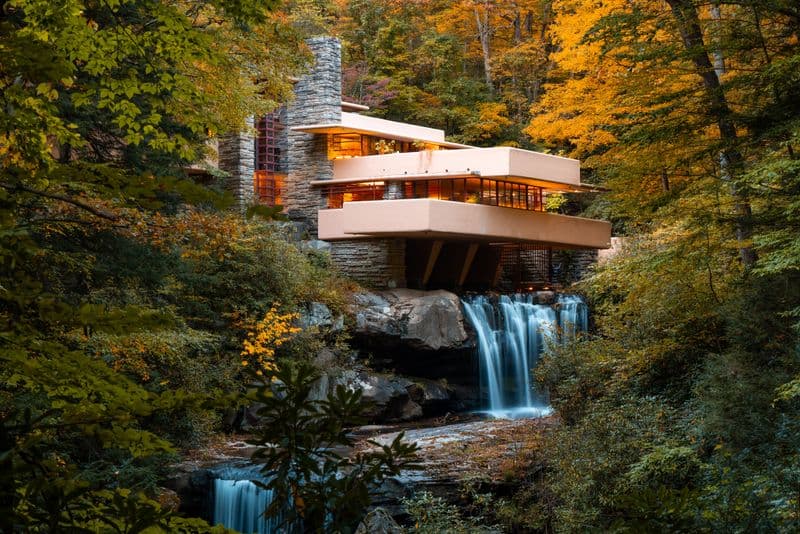
Fallingwater, designed by Frank Lloyd Wright in 1935, is not just a house but an architectural marvel that sits over a waterfall in Pennsylvania.
This iconic structure exemplifies Wright’s philosophy of organic architecture, where buildings exist in harmony with nature.
The house’s cantilevered terraces extend over the waterfall, creating a seamless blend between the man-made and the natural.
Visitors can explore this UNESCO World Heritage Site, marveling at its innovative design and connection to the surrounding forest, offering a serene retreat into the artful balance of architecture and nature.
4. The Kelpies, Falkirk, Scotland
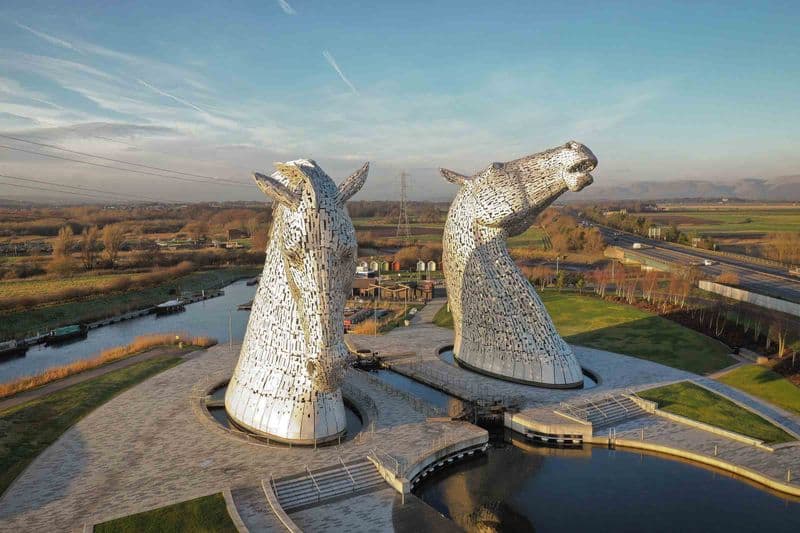
The Kelpies, created by artist Andy Scott, are two towering horse head sculptures located in Falkirk, Scotland.
Standing at 30 meters tall, these monumental structures are crafted from stainless steel and represent the mythical water horses from Scottish folklore.
Completed in 2013, The Kelpies are part of The Helix, a land transformation project. Their reflective surfaces shimmer under sunlight, creating a dazzling spectacle.
Visitors can explore the interior of these sculptures on guided tours, learning about their creation and the cultural stories they symbolize, making them a must-see for art enthusiasts and tourists alike.
5. The Gates of Hell, Paris, France
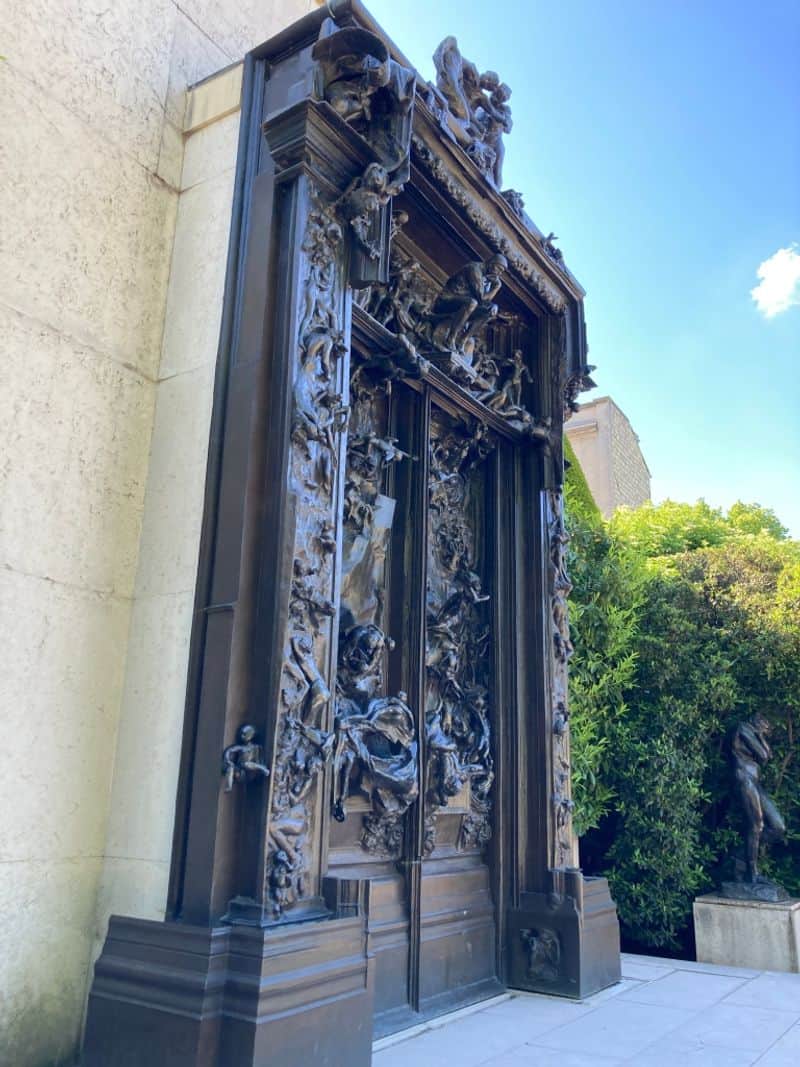
The Gates of Hell, sculpted by Auguste Rodin, is an imposing bronze masterpiece that resides in the garden of the Rodin Museum in Paris.
Created between 1880 and 1917, this intricate work depicts scenes from Dante’s Inferno.
Rodin’s sculpture features over 200 figures, including “The Thinker,” originally intended as part of this monumental doorway.
The piece captures the emotional depth and complexity of human suffering and desire.
Visitors to the museum can admire Rodin’s craftsmanship and the haunting beauty of this sculpture, which remains a profound exploration of existential themes.
6. The Monument of the Wild Horses, Viseu, Portugal
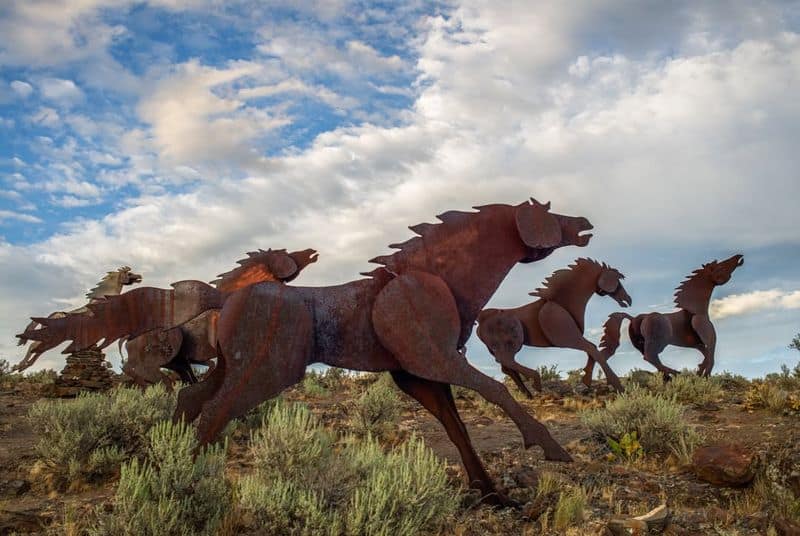
The Monument of the Wild Horses, located in Viseu, Portugal, is a dynamic bronze sculpture created by artist Dominik Wdowski.
Unveiled in 2010, this captivating piece depicts a group of wild horses in motion, capturing their grace and vitality.
Set against the backdrop of rolling hills, the sculpture seamlessly integrates with its natural surroundings. The artist’s attention to detail conveys the energy and freedom of the horses.
Visitors can walk around the installation, experiencing the fluidity of form and the harmonious connection between art and the landscape, making it a beloved landmark.
7. The Trail of Tears, Oklahoma, USA
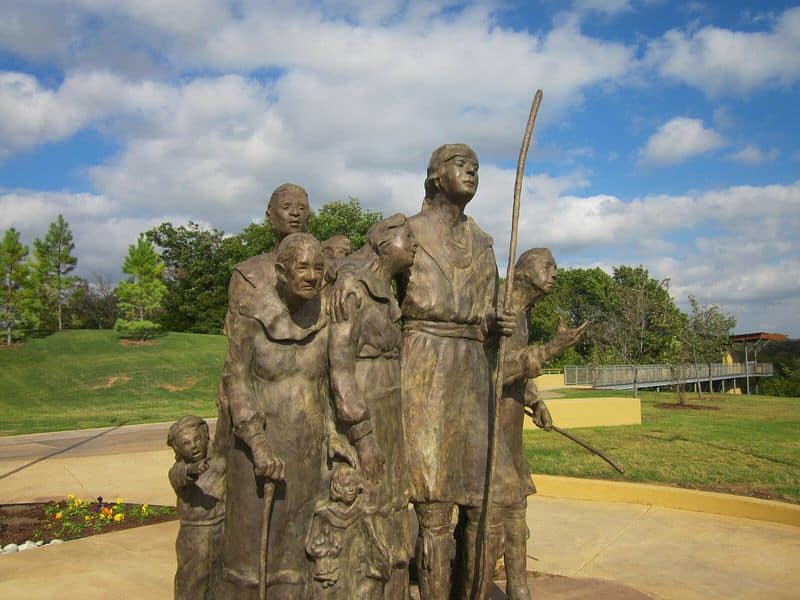
The Trail of Tears sculpture stands as a poignant memorial in Oklahoma, USA, commemorating the forced relocation of Native American tribes.
This bronze installation, created by artist Troy Anderson, depicts a somber procession of figures on horseback.
Unveiled in 1999, the sculpture honors the resilience of those who endured this tragic chapter in history. Its location in a serene park invites visitors to reflect on the past.
The detailed expressions and postures of the figures convey a powerful narrative, making it an important cultural and historical site that encourages contemplation and remembrance.
8. Wawel Dragon Sculpture, Krakow, Poland
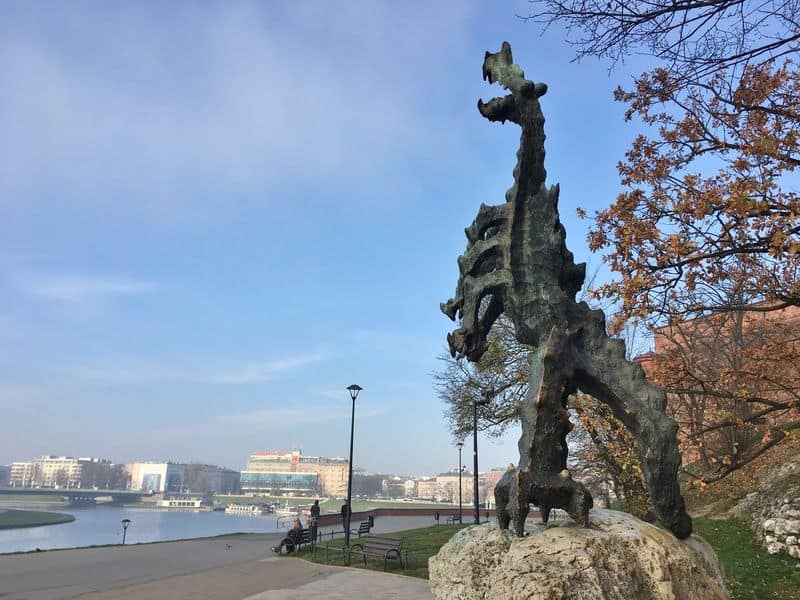
Perched at the foot of Wawel Hill in Krakow, Poland, the Wawel Dragon Sculpture is a fiery bronze installation that captures the legendary beast of local folklore.
Created in 1972 by artist Bronisław Chromy, this dragon sculpture periodically breathes fire, delighting both children and adults.
The sculpture serves as a playful homage to the myth of the Wawel Dragon, a tale cherished by the city’s inhabitants.
Visitors often gather for photos, especially during the dragon’s fiery display, making it a lively and interactive attraction that weaves together myth and artistic expression.
9. The Floating Piers, Italy
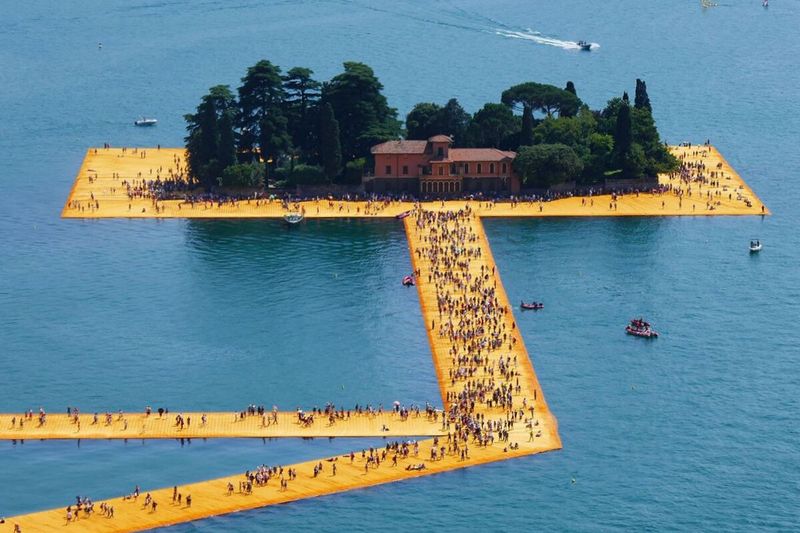
Christo and Jeanne-Claude’s The Floating Piers transformed Lake Iseo in Italy into a vibrant and interactive artwork.
The installation featured 100,000 square meters of yellow fabric floating on the water, allowing visitors to walk on the lake itself.
With the backdrop of lush mountains, the installation created a stunning contrast between the fabric’s vibrant color and the serene, natural setting.
The experience of walking on water offered a unique perspective on the landscape, making visitors feel like part of the surrounding environment.
As the sun set, the walkways seemed to glow, creating an almost surreal atmosphere.
This temporary artwork left a lasting impression on all who experienced it, emphasizing the power of art to transform our relationship with nature.
10. The Angel of the North, Gateshead, UK
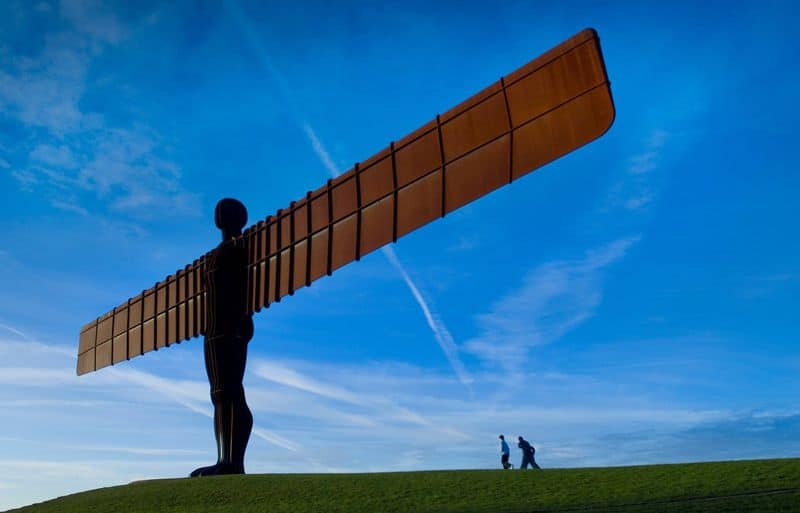
The Angel of the North, designed by Antony Gormley and erected in 1998, dominates the landscape in Gateshead, UK.
Standing 20 meters tall with a wingspan of 54 meters, this steel sculpture welcomes travelers as they enter the region.
The angel’s form, with its outstretched wings, symbolizes hope and optimism. Positioned on a hill, it integrates with its surroundings, becoming a prominent landmark.
Visitors are drawn to its sheer scale and contemplative presence, making it not just a piece of art but a beacon of cultural significance, attracting millions of admirers each year.

